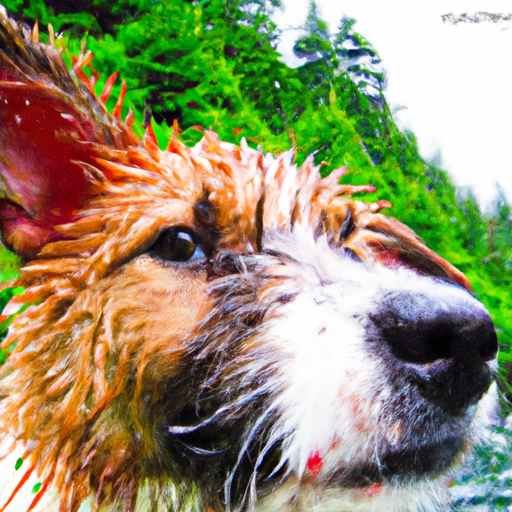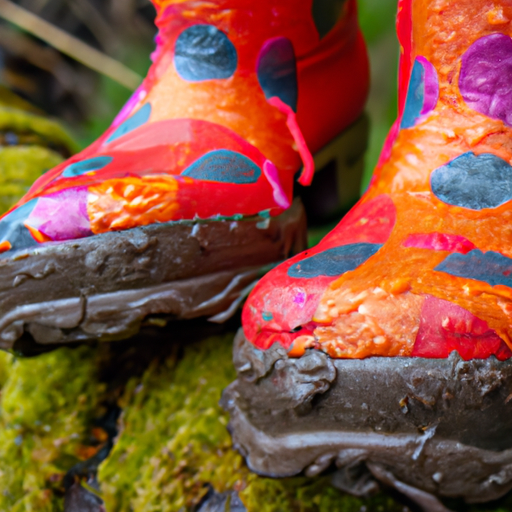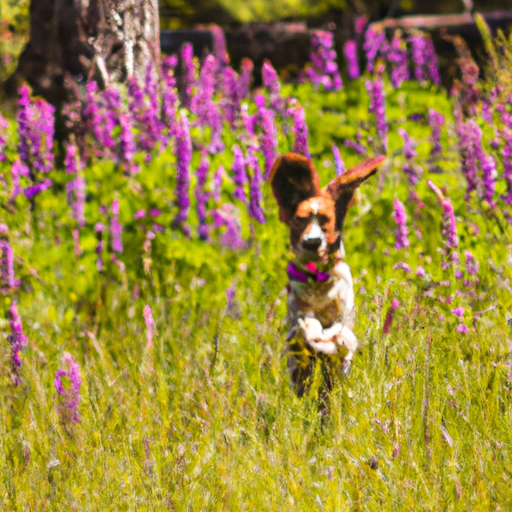In this article, we will explore some of the most common behavior problems that puppies can exhibit and provide practical solutions to address them. Whether your furry friend is constantly chewing on your belongings or struggling with house training, we've got you covered. Understanding and addressing these behaviors early on can help ensure a happy and well-behaved pup. So, let's dive right in and discover how to tackle these common puppy behavior problems!
Housebreaking
Accidents in the house
One of the most common challenges when you bring home a new puppy is dealing with accidents in the house. It can be frustrating to constantly clean up after your furry friend, but it's important to understand that accidents are a normal part of the housebreaking process. Puppies have small bladders and limited control over their bowel movements, so accidents are bound to happen.
Solution: Establish a routine
To address this issue, it's crucial to establish a consistent routine for your puppy. Take them outside first thing in the morning, after meals, after playtime, and before bedtime. By following a routine, you are teaching your puppy when and where to eliminate, which will help prevent accidents inside the house.
Solution: Positive reinforcement
Positive reinforcement is another effective technique for housebreaking. Whenever your puppy eliminates outside, make sure to offer plenty of praise and rewards. This will help them associate going potty outside with positive experiences, encouraging them to repeat the desired behavior.
Solution: Crate training
Crate training can be a valuable tool in housebreaking your puppy. Dogs naturally avoid soiling their sleeping areas, so a properly sized crate can help teach them to hold their bladder and bowels. However, it's important to remember that a crate should never be used as a form of punishment. Instead, crate training should be a positive and comfortable experience for your puppy.
Solution: Supervision and confinement
Finally, close supervision and confinement are essential during the housebreaking process. By keeping a close eye on your puppy and limiting their access to certain areas of the house, you can prevent accidents from occurring. Consider using baby gates or confining your puppy to a small, puppy-proofed area when you can't actively supervise them.
Chewing
Destructive chewing
Chewing is a completely normal behavior for puppies. It helps them explore their environment, relieve teething discomfort, and keep their teeth clean. However, when your puppy starts chewing on your favorite shoes or furniture, it can become a problem.
Solution: Appropriate chew toys
Providing your puppy with appropriate chew toys is key to redirecting their chewing behavior. Choose toys that are specifically designed for puppies and can withstand vigorous chewing. Offer a variety of textures and shapes to keep your puppy engaged and satisfied.
Solution: Puppy-proofing the house
Puppy-proofing your house is another important step in managing destructive chewing. Keep valuable items out of your puppy's reach and secure electrical cords, houseplants, and other potentially dangerous objects. This will help ensure your puppy doesn't have access to items they shouldn't be chewing on.
Solution: Using deterrents
If your puppy continues to chew on inappropriate objects despite having access to appropriate chew toys, you can use deterrents to discourage them. Bitter apple sprays or other pet-safe deterrents can be applied to objects you want your puppy to avoid. The bitter taste will discourage them from chewing on those items.
Solution: Providing mental stimulation
Sometimes, destructive chewing can be a sign that your puppy is bored or understimulated. Make sure to provide plenty of mental and physical stimulation through interactive toys, puzzle games, and regular exercise. A tired puppy is less likely to engage in destructive chewing behavior.
Biting and Nipping
Play biting
Puppies explore the world with their mouths, and play biting is a natural behavior during their early months. However, it's important to teach your puppy appropriate boundaries when it comes to biting and nipping.
Solution: Redirection and substitution
Whenever your puppy starts to bite or nip, redirect their attention to an appropriate chew toy or a game of fetch. By replacing inappropriate biting behavior with an acceptable alternative, you are teaching your puppy what is and isn't allowed.
Solution: Puppy socialization
Proper socialization is crucial for curbing biting and nipping behavior. By exposing your puppy to a variety of people and other dogs from an early age, they will learn how to interact appropriately. Socialization also helps them develop bite inhibition, which is the ability to control the strength of their bite.
Solution: Gentle discipline
When your puppy bites too hard during play, it's important to provide gentle discipline to discourage the behavior. A firm “no” or a sharp yelp, mimicking the sound another puppy would make, can indicate that the biting was too rough. This sends a clear message to your puppy that their actions are not acceptable.
Solution: Teaching bite inhibition
Teaching bite inhibition is a critical part of raising a well-behaved puppy. Gently and gradually teach your puppy to reduce the pressure of their bite during play. This can be done by letting out a high-pitched “ouch” or stopping play whenever they bite too hard. Over time, your puppy will learn to control the force of their bite.
Jumping Up
Jumping on people
When your puppy greets you or other people by jumping up, it can be both annoying and potentially dangerous. It's important to address this behavior early on to prevent it from becoming a habit.
Solution: Ignoring the behavior
One effective strategy to discourage jumping is to ignore the behavior completely. When your puppy jumps up, turn away from them and avoid eye contact or any form of interaction. This sends a clear message that jumping will not get them the attention they seek.
Solution: Training an alternative behavior
Teaching your puppy an alternative behavior, such as sitting or offering a paw, can redirect their attention away from jumping. Practice this alternative behavior consistently and reward them with praise or treats when they respond appropriately. By reinforcing the desired behavior, you are replacing jumping with a more acceptable greeting.
Solution: Ensuring consistency
Consistency is key when addressing jumping behavior. Make sure that everyone in your household follows the same rules and consistently reinforces the desired behavior. If your puppy receives mixed messages, they may become confused and continue jumping.
Solution: Seeking professional help if needed
If your puppy's jumping behavior persists despite your best efforts, consider seeking help from a professional dog trainer or behaviorist. They can provide personalized guidance and training techniques to address the issue effectively.
Excessive Barking
Barking for attention
Excessive barking can be a frustrating problem for both you and your neighbors. If your puppy barks excessively for attention, it's important to address the issue in a kind and consistent manner.
Solution: Ignore the barking
When your puppy barks for attention, it's important not to reward the behavior with immediate attention. Instead, ignore the barking and wait for a moment of silence before providing any form of interaction or attention. This teaches your puppy that barking does not yield the desired outcome.
Solution: Teach quiet command
Teaching your puppy a “quiet” command can be very helpful in reducing excessive barking. Start by saying “quiet” when your puppy is barking and then wait for a brief moment of silence. Reward your puppy with praise and treats when they stop barking, gradually increasing the duration of silence before rewarding.
Solution: Provide proper exercise and mental stimulation
Boredom and lack of physical activity can contribute to excessive barking. Make sure your puppy gets plenty of exercise and mental stimulation throughout the day. Regular walks, playtime, and interactive toys can help tire them out, reducing the likelihood of excessive barking.
Solution: Consult a professional behaviorist if necessary
If your puppy's excessive barking persists or becomes a serious problem, it may be beneficial to consult a professional behaviorist. They can assess the underlying causes of the barking and develop a tailored plan to address the issue effectively.
Separation Anxiety
Distress when left alone
Separation anxiety is a common issue among puppies that can lead to destructive behavior and excessive vocalization when they are left alone. It's important to address separation anxiety early on to prevent it from escalating.
Solution: Gradual desensitization
Gradual desensitization is a technique that can help your puppy become more comfortable with being left alone. Start by practicing short absences and gradually increase the duration over time. Pair each departure with a positive experience, such as leaving them with a long-lasting treat or engaging toy.
Solution: Provide interactive toys and puzzles
Interactive toys and puzzles can provide mental stimulation and help distract your puppy when you're not around. Fill a Kong toy with treats or use puzzle feeders to keep them occupied and alleviate anxiety during your absence. These toys can be a positive and rewarding experience for your puppy.
Solution: Counter-conditioning techniques
Counter-conditioning techniques involve changing your puppy's emotional response to being alone. Use positive reinforcement to associate your departure with something enjoyable, such as a special treat or a favorite toy. Over time, your puppy will start to associate your absence with positive experiences rather than anxiety.
Solution: Seek professional help for severe cases
If your puppy's separation anxiety is severe or persistent, seeking help from a professional behaviorist is highly recommended. They can develop a comprehensive behavior modification plan tailored to your puppy's specific needs and help address the underlying causes of their anxiety.
Digging
Excessive digging in the yard
While digging is a natural instinct for many dogs, excessive digging in your yard can be frustrating and destructive. Understanding and addressing the underlying reasons for your puppy's digging behavior is crucial.
Solution: Provide designated digging areas
One effective solution to minimize damage to your yard is to provide a designated area where your puppy is allowed to dig. Provide them with a sandbox or a specific section of your yard filled with loose soil or sand. Whenever you catch your puppy digging in an inappropriate area, gently redirect them to their designated spot.
Solution: Bury toys and treats for mental stimulation
Burying toys and treats in your puppy's designated digging area can provide mental stimulation and satisfy their natural digging instinct. This will help keep them engaged and focused on appropriate digging activities, reducing the likelihood of them digging up your prized garden or flowerbeds.
Solution: Increase exercise and playtime
Many puppies resort to digging out of boredom or excess energy. Increasing the amount of exercise and playtime can help tire them out and reduce the urge to dig. Regular walks, interactive play sessions, and mental stimulation games can help redirect their energy in a positive way.
Solution: Address underlying causes if necessary
In some cases, digging can be a symptom of an underlying issue such as anxiety, boredom, or a lack of mental stimulation. If your puppy's digging behavior persists despite your best efforts, consider consulting with a professional behaviorist who can help identify and address the underlying causes.
Aggression
Resource guarding
Resource guarding is a form of aggression where a dog becomes possessive and protective of certain items, such as toys, food, or their sleeping area. It is important to address resource guarding early on to prevent it from escalating into more severe forms of aggression.
Solution: Manage the environment
The first step in managing resource guarding is to control the environment to prevent situations that trigger the behavior. For example, if your puppy guards their food bowl, feed them in a separate room or use a food puzzle toy to make mealtime more interactive and engaging.
Solution: Trade-up and reward-based training
Teaching your puppy to associate giving up an item with receiving something even better is key to addressing resource guarding. The trade-up technique involves trading a lower-value item for a higher-value one, rewarding your puppy for giving up the object they are guarding.
Solution: Consistency and socialization
Consistency is crucial when addressing resource guarding. Make sure that everyone in your household follows the same rules and training techniques. Additionally, appropriate socialization from an early age can help prevent resource guarding behavior by teaching your puppy to be comfortable and relaxed around other dogs and people.
Solution: Consult a professional behaviorist for aggression issues
If your puppy displays aggressive behavior, particularly if it involves resource guarding, it is highly recommended to seek help from a professional behaviorist. They can assess the situation, provide specialized training techniques, and develop a behavior modification plan to address the aggression effectively.
Fear and Anxiety
Fear of unfamiliar people or dogs
Fear and anxiety can be challenging issues to address in puppies, but it's crucial to help them overcome these fears to ensure their overall well-being and happiness.
Solution: Gradual exposure and positive reinforcement
Expose your puppy to new people and dogs gradually, starting with calm and controlled settings. Use positive reinforcement by rewarding calm and relaxed behavior with treats and praise. Over time, your puppy will start to associate new experiences with positive outcomes, reducing their fear and anxiety.
Solution: Counter-conditioning techniques
Counter-conditioning involves changing your puppy's emotional response to fearful situations. By gradually exposing your puppy to the feared stimulus and pairing it with something positive, such as treats or playtime, you can help them develop positive associations and reduce anxiety.
Solution: Create a safe and calm environment
Providing a safe and calm environment is essential for puppies struggling with fear and anxiety. Establish a peaceful living space by minimizing loud noises, creating a designated retreat area with cozy bedding, and using products like Adaptil (a synthetic pheromone product) to promote relaxation.
Solution: Seek professional help for severe anxiety
If your puppy's fear and anxiety are severe or causing significant distress, seeking help from a professional behaviorist is recommended. They can provide expert guidance, personalized training techniques, and develop a comprehensive behavior modification plan to address your puppy's anxieties effectively.
Leash Pulling
Difficulty walking without pulling
Leash pulling is a common issue that many puppy owners face. However, with consistency and training, you can teach your puppy to walk politely on a leash.
Solution: Use a no-pull harness or head collar
Using a no-pull harness or head collar can be helpful in managing leash pulling. These tools provide better control and discourage your puppy from pulling by redirecting their forward momentum. It's important to choose a properly fitting harness or head collar and introduce it gradually to make your puppy comfortable wearing it.
Solution: Training loose leash walking
Training your puppy to walk politely on a leash requires patience and consistency. Start by rewarding your puppy for walking beside you with a loose leash. Whenever your puppy starts to pull, stop walking and wait for them to return to your side. Resume walking and reward them when they follow alongside you.
Solution: Provide regular exercise to channel energy
Many puppies pull on the leash due to excess energy. Ensure that your puppy receives regular exercise and playtime to help them burn off energy before walks. A tired puppy is more likely to walk calmly on a leash and be less inclined to pull.
Solution: Seek professional help for persistent pulling
If your puppy's leash pulling behavior persists despite consistent training and effort, it may be beneficial to seek help from a professional dog trainer or behaviorist. They can assess the situation, provide specialized techniques, and develop a training plan tailored to your puppy's specific needs.






